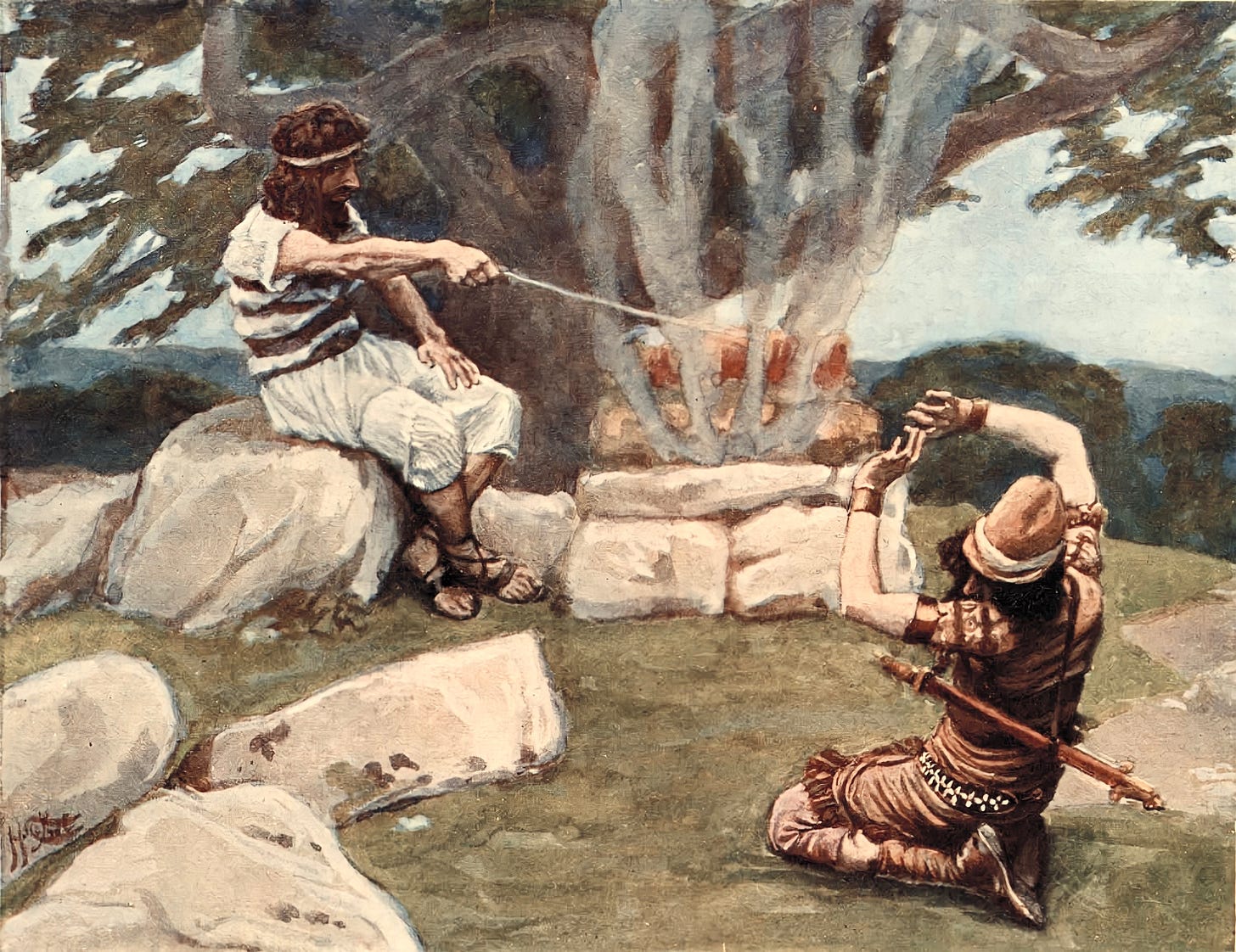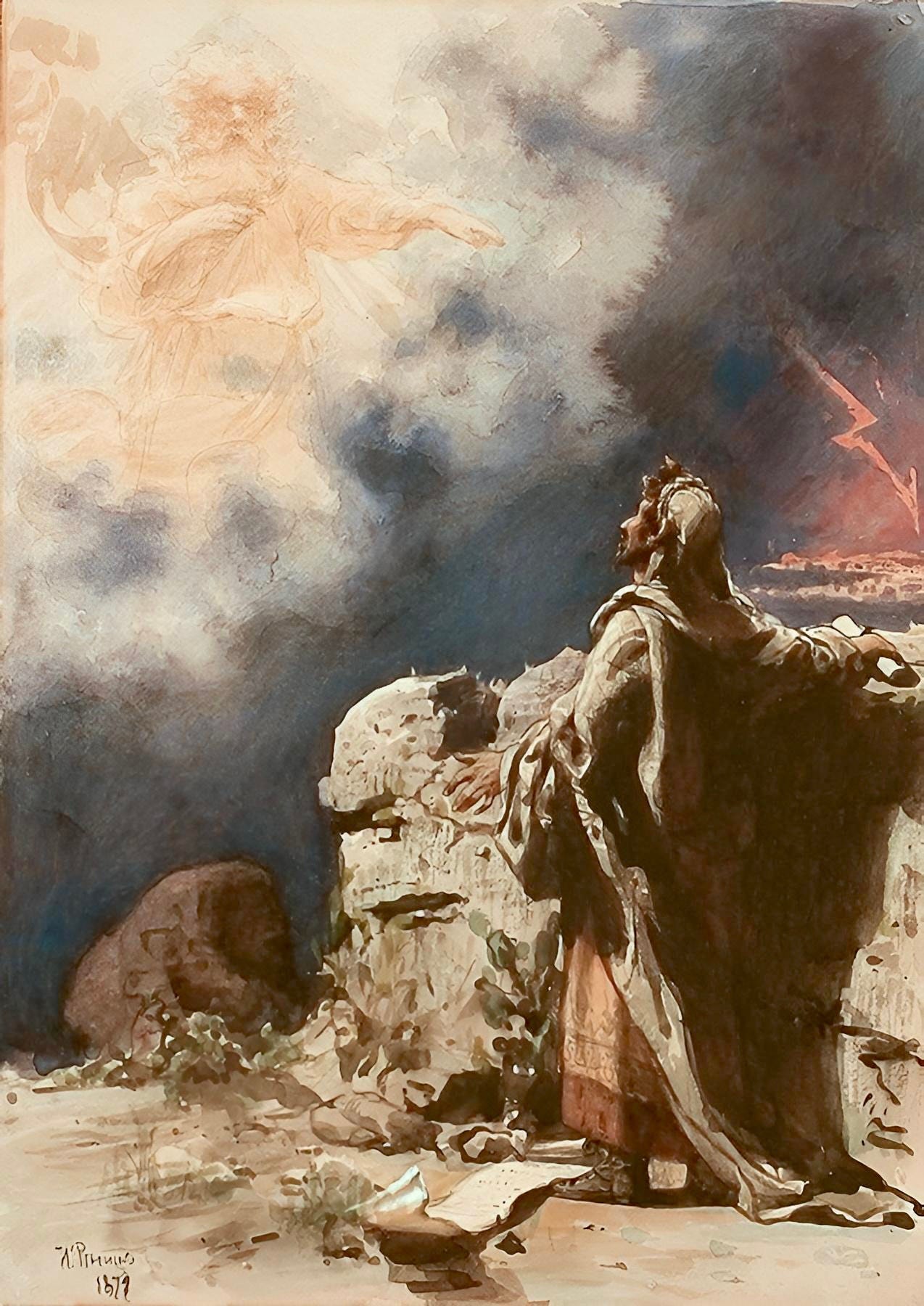Is a trinitarian Godhead a Christian invention, or can the concept be found within the Hebrew Scriptures?
How can the Hebrew ‘Shema’ below be reconcilable with the triune God of the New Testament?:
“Hear, O Israel: The Lord our God, the Lord is one!”
(Deuteronomy 6:4, NKJV).
It has been argued that Christianity borrowed a trinitarian Godhead from Hellenistic philosophy or pagan polytheism (Bates, 2015; Brown, 2006). Those who state this ultimately believe that Jewish monotheism was “incapable of a linear growth toward a high Christology” (Bates, 2015, p.xi).
What these arguments fail to recognise is that the Hebrew Scriptures speak of a compound unity when describing the oneness of God. The Hebrew word for ‘one’ used in Deuteronomy 6:4 is אֶחָד (eHad), the same word used to describe the state of oneness between man and woman in Genesis 2:24. So when it is used in reference to the Godhead it is describing “the oneness that results from a unity of numerous persons” (Gulley, 2006; Whidden et al., 2002, p.34). It is argued that the three persons of the Trinity; Father, Son and Holy Spirit were individually identified and distinct within both the Hebrew Scriptures and Hebrew thought prior to the writing of the New Testament.
The Second Person
Within Jewish thought and rabbinic writing prior to the Christian era it was normative to talk of two Yahwehs (Heiser, 2018; Segal, 2002). This theological concept was based on scriptures that identified or implied a second person.
Several of these passages concern the presence of ‘The angel of Yahweh’;
For example, Abraham’s encounter when he was about to sacrifice his son Isaac;
“And the angel of Yahweh called to him from heaven and said, “Abraham! Abraham!” And he said, “Here I am.” And he said, “Do not stretch out your hand against the boy; do not do anything to him. For now I know that you are one who fears God, since you have not withheld your son, your only child, from me.””
(Genesis 22:11-12, LEB).
Here we see the angel of Yahweh refer to himself as the one who had originally requested the sacrifice.
When Jacob had a dream in Genesis 31, he encounters the angel of Yahweh who then proceeds to identify himself as “the God of Bethel where you anointed a stone pillar, where you made a vow to me” (Genesis 31:13, LEB).
When Moses came to Mount Horeb “the angel of Yahweh appeared to him in a flame of fire from the midst of a bush”, yet the passage then goes on to say that “Yahweh (…) called to him from the midst of the bush” (Exodus 3:2,4, LEB).
When Joshua encounters the commander of Yahweh’s army before the fall of Jericho this commander tells Joshua to “take off your sandals from your feet, for the place where you are standing is holy” (Joshua 5:15, LEB).
Furthermore, in Judges 6 we find the following passage that further blurs the identities of Yahweh and the angel of Yahweh;
“The angel of Yahweh came and sat under the oak that was at Ophrah that belonged to Jehoash the Abiezrite; and Gideon his son was threshing wheat in the winepress to hide it from the Midianites. The angel of Yahweh appeared to him and said to him, “Yahweh is with you, you mighty warrior.” Gideon said to him, “Excuse me, my Lord. If Yahweh is with us, why then has all this happened to us? Where are all his wonderful deeds that our ancestors recounted to us, saying, ‘Did not Yahweh bring us up from Egypt?’ But now Yahweh has forsaken us; he has given us into the palm of Midian.” And Yahweh turned to him and said, “Go in this your strength, and you will deliver Israel from the palm of Midian. Did I not send you?””
(Judges 6:11-14, LEB).
There are also passages where Yahweh describes the function and purpose of his angel saying that he can “forgive your transgression, for my name is in him” (Exodus 23:21, LEB).
This is by no means an exhaustive list but serves to illustrate that there was a biblical precedent for a second Yahweh figure within Hebrew Scriptures.
Additionally, we also know that Jewish writers during the second temple period speculated on the identity of this second figure in pseudepigraphical literature such as 1 & 2 Enoch and The Apocalypse of Abraham, or in the Targums (translation of the Hebrew Scriptures into Aramaic), where they cast Adam, Jacob, Enoch, Moses, the angel Michael or another angel called Ya’el (literally Yahweh is God) in this role (Heiser, 2018). This stands in direct contrast to any argument that the concept of the Trinity was borrowed, newly created or otherwise drawn from outside Judaism (Brown, 2006; Heiser, 2018).
The Third Person
In the Old Testament prophets, we can also see passages that identify the Spirit of God as a third person. For example in Isaiah 63, we read the following;
“I will mention the loyal love of Yahweh, the praises of Yahweh, according to all that Yahweh has done for us, and the greatness of goodness to the house of Israel that he has done to them according to his mercy and the abundance of his loyal love. And he said, “Surely my people are children; they will not break faith.” And he became a Savior to them. In all their distress, there was no distress, and the messenger of his presence saved them, in his love and compassion he himself redeemed them, and he lifted them up, and he supported them all the days of old. But they were the ones who rebelled, and they grieved his Holy Spirit, so he became an enemy to them; he himself fought against them.”
(Isaiah 63:7-10 LEB).
In this passage, we have Yahweh, the messenger [or angel, Hebrew: Malak, מֲלְאָך] of his presence and the Holy Spirit.
A similar account of multiple persons is found in the book of Ezekiel, where it is written;
“I looked, and there was a form that had the appearance of a man. From what seemed to be His waist down was fire, and from His waist up was something that looked bright, like the gleam of amber. He stretched out what appeared to be a hand and took me by the hair of my head. Then the Spirit lifted me up between earth and heaven and carried me in visions of God to Jerusalem, to the entrance of the inner gate that faces north, where the offensive statue that provokes jealousy was located.”
(Ezekiel 8:2-3, HCSB).
Both passages above are written in a way that purposefully interchanges the persons throughout the narrative, causing the reader to question who the word “he” refers to, who it is that saved Israel and who is it who lifted Ezekiel up.
The Lamentations Rabbah (or Hebrew: EyKhah Rabbah, אֵיכָה רבה), a midrashic (Jewish exegetical) commentary on the book of Lamentations from the Talmudic era, also records a clear Jewish view of the Holy Spirit as a separate person, and was somebody who would communicate or mediate between God and Israel (Brown, 2006). It is clear that there was a Jewish belief that viewed the Holy Spirit as a person and not just an impersonal power. A person who was God yet was also a separate entity (Brown, 2006).
It can be concluded, therefore, that the New Testament’s description of a trinitarian Godhead is a theological position that is underpinned by the Hebrew Scriptures. Where the apostle Paul writes in trinitarian terms, stating that in Jesus “dwells all the fullness of the Godhead bodily” (Colossians 2:9, NKJV) and that God sent both “his Son” and “the Spirit of his Son” (Galatians 4:4-6, LEB), Paul was doing so as a Jew and monotheist who was fully devoted to the faith of his fathers (Constant, 2020).
Reference List
Bates, M.W., 2015. The Birth of the Trinity: Jesus, God, and Spirit in New Testament and Early Christian Interpretations of the Old Testament. OUP Oxford.
Brown, M.L., 2006. Answering Jewish Objections to Jesus: Volume 4: New Testament Objections. Baker Books.
Constant, P., 2020. The Apostle Paul and the Trinity. Available from: https://www.gospelwitness.org/copy-of-faith-without-works-is-dead-1.
Gulley, N.R., 2006. Trinity in the Old Testament. Journal of the Adventist Theological Society, 17(1).
Heiser, M. S., 2018. The Jewish Trinity - Dr. Michael Heiser - A Walk Through The Old Testament Concerning The Trinity. Orthodox Journey (YouTube.com). Available from: https://youtu.be/lS22MPVFngs.
Jones, M., 2016. The Trinity in Ancient Jewish Books. InspiringPhilosophy (YouTube.com). Available from: https://youtu.be/d-aVQ8MELeg.
Segal, A.F., 2002. Two Powers in Heaven: Early Rabbinic Reports About Christianity and Gnosticism. BRILL.
Whidden, W.W., Moon, J. and Reeve, J.W., 2002. The Trinity: Understanding God's Love, His Plan of Salvation, and Christian Relationships. Review and Herald Pub Assoc.






